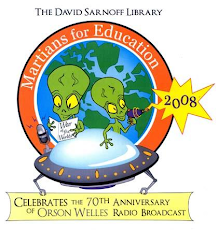Tracing the history of television from early inception through golden age, to the current world of
 flat screens, cable, and satellites, Magoun (David Sarnoff Library) comprehensively overviews a medium now in everyone's memory. He readily admits that he neither watches television nor possesses any technical training in chemistry or physics, but these have not hampered his research skills. Magoun provides an interesting historical survey of major inventors, companies, and influences in the life story of a technology known as television. He writes from the perspective of a witness to the conception and birth of television. He continues to document its life from the role of a parent who ultimately must witness the eventual breaking away of the "child" so that it could forge ahead to build the revolutionary digital world, and he follows its eventual death as medium of choice for most people. Along the way, Magoun reveals how society has also evolved with each change in technology. Readers are left with an appreciation for an old friend that they enjoyed having around, as well as recognition of the role that television has played in making entertainment and communication what it is today.
flat screens, cable, and satellites, Magoun (David Sarnoff Library) comprehensively overviews a medium now in everyone's memory. He readily admits that he neither watches television nor possesses any technical training in chemistry or physics, but these have not hampered his research skills. Magoun provides an interesting historical survey of major inventors, companies, and influences in the life story of a technology known as television. He writes from the perspective of a witness to the conception and birth of television. He continues to document its life from the role of a parent who ultimately must witness the eventual breaking away of the "child" so that it could forge ahead to build the revolutionary digital world, and he follows its eventual death as medium of choice for most people. Along the way, Magoun reveals how society has also evolved with each change in technology. Readers are left with an appreciation for an old friend that they enjoyed having around, as well as recognition of the role that television has played in making entertainment and communication what it is today.Summing Up: Highly recommended.
-- C. S. McCoy, University of South Florida










